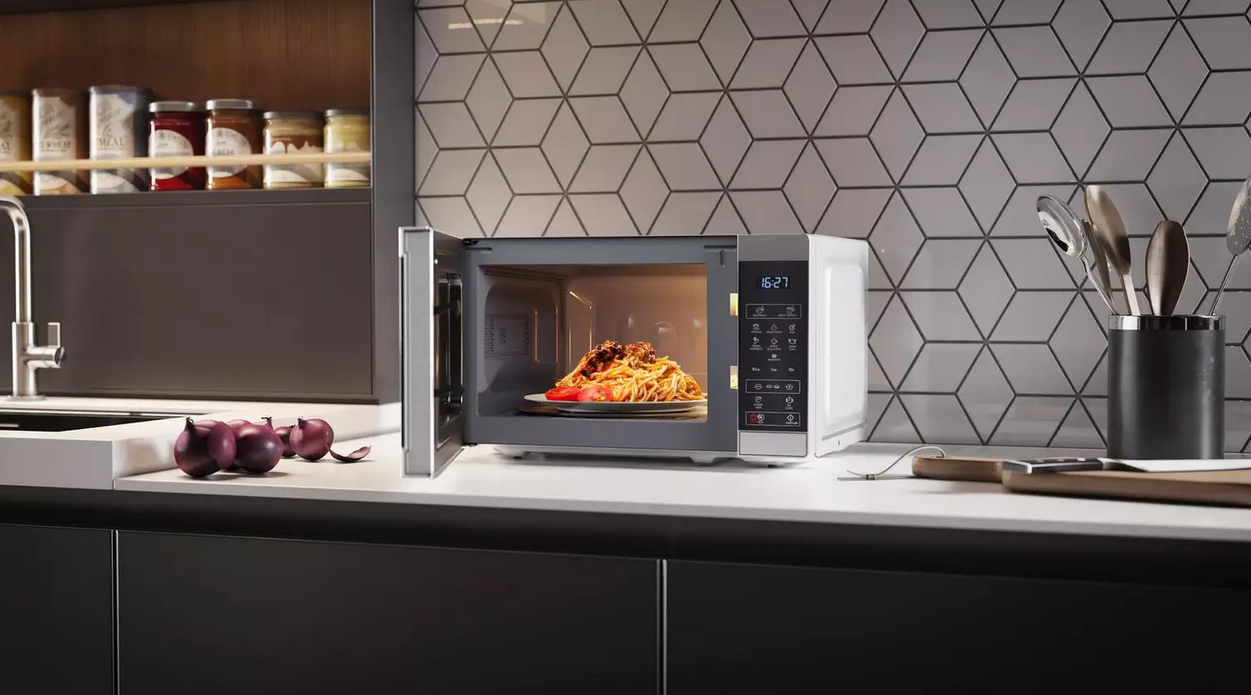
Microwaves are one of the simple small cooking appliances that you can have in the kitchen. Whilst basic to operate, it can play a big role in your cooking routine adding an element of convenience to your day. Although it has a simple design there are still some general rules to follow to get the best cooking results and keep your appliance lasting long. Here are the main Dos and Don’ts to consider when operating your microwave.
The Dos
- Do follow manufacturer installation guidance
We’ve all been there; we get a new appliance, and we want to get it set up straight away without first reading the manual. The manual will usually contain information regarding how the appliance should be installed. This can include what spacings to have around the appliance and what surfaces it can be used on. This is important to consider as microwaves need sufficient clearance for air flow and the installation guidance will give advice for positioning to get the correct ventilation.
- Do use microwave-safe containers
Only ever use microwave-safe containers in the microwave. Most containers should be labelled as microwave safe so if it isn’t then it is best to avoid using it inside the microwave. Putting the wrong material in the microwave can cause damage to both the container and the microwave.
- Do cover food to prevent splatters and cook effectively
Put clingfilm or microwave safe lids on dishes when cooking to prevent any food splattering during the cooking process. Not only does this prevent a mess, but it also helps with cooking. When cooking food such as jacket potatoes, the moisture often releases and can dry out the item. Having a covering over the food retains the moisture and helps to cook evenly.
- Do stir and rotate in intervals
If the food you are cooking needs to be heated in the microwave for a longer time, you may need to do this in intervals. This means a9 minute heating process may need to be done for 3 minutes, stirred, another 3 minutes, stirred and then the final 3 minutes. Microwave meals will usually have instructions as to the interval and stirring times required, but by doing this it helps to distribute the heat evenly.
- Do take advantage of presets
Some microwaves have preset heating settings for different food types such as beverages and defrost. Take advantage of these to get the best heating levels to make the cooking process much simpler for specific items.
The Don’ts
- Do not microwave sealed containers
You should never microwave containers that are completely sealed up. This is because when heating it can cause pressure to build up which may result in the container bursting. To avoid this, only use microwaveable safe containers and follow any instructions when cooking.
- Do not microwave metal
Never place metal objects or containers in the microwave. Metal reflects the microwaves which can spark during operation and cause damage, as well as posing a safety risk. Ensure that only microwave-safe materials are placed inside.
- Do not overheat liquids
Always be cautious when heating any liquids in the microwave. This is because heating liquids can lead to boiling and splattering. When heating liquids, we suggest using microwave safe containers or adding cling-film to any cups or bowls to help contain the liquid. Once heated, allow the liquid to cool down before handling and open any lids at a distance to avoid any sudden splattering.
- Do not microwave unsuitable food
You should avoid microwave specific food that is generally deemed unsafe to microwave. For example, raw meat, eggs that are still in the shells or whole fruits. These can sometimes explode when cooking as the heat causes them to expand. It can also be unsafe to cook these in the microwave as some of these items, like raw meat, require thorough cooking before consumption or additional heat from the microwave.
- Do not operate empty
Only operate the microwave when you have food or liquid inside that needs heating. Avoid operating it empty as it can affect the longevity of the appliance over time.
Anything else?
With these Dos and Don’ts in mind you can safely enjoy using your microwave knowing you’ll get the best results and keep your appliance lasting long. Remember to follow any instructions from the manufacturer and user manual specific to your model.